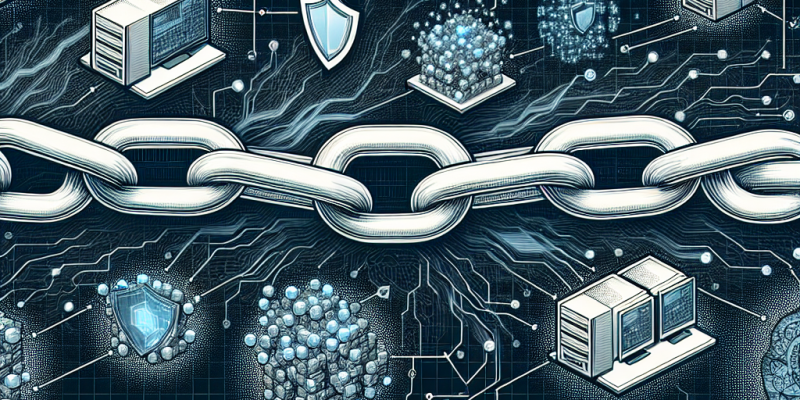Understanding the Cyber Kill Chain: A Guide to Defending Against Attacks

In today’s increasingly digital world, cybersecurity has become a critical concern for businesses, government agencies, and individuals alike. As threats evolve, so too must our strategies for defense. One of the most influential frameworks in the field of cybersecurity is the Cyber Kill Chain, developed by Lockheed Martin. This conceptual model not only helps in understanding the stages of a cyber attack but also guides organizations in fortifying their defenses to preemptively counteract potential threats. This article will delve into the Cyber Kill Chain, its stages, and how to implement effective strategies for defense against cyber attacks.
What is the Cyber Kill Chain?
The Cyber Kill Chain is a seven-stage model designed to illustrate the stages of a cyber attack. By breaking down the attack process, it provides organizations with a clearer understanding of how attacks are executed and how to interject at various points to thwart malicious actors. The stages of the Cyber Kill Chain are:
1. Reconnaissance
In this initial stage, attackers gather information about their target. This could involve researching the organization’s infrastructure, identifying key personnel, and analyzing vulnerabilities in the network. The reconnaissance phase can last from days to months, depending on the sophistication of the attackers.
Defense Strategies: Organizations should conduct regular security assessments and vulnerability scans to identify and remediate potential weaknesses. Additionally, implementing threat intelligence platforms can help to monitor and analyze patterns of reconnaissance activities directed towards the organization.
2. Weaponization
Once attackers have sufficient information, they move to weaponization, where they develop a malicious payload tailored to exploit the identified vulnerabilities. This often involves creating a deliverable exploit, typically in the form of malware or a phishing email.
Defense Strategies: Regular training on phishing awareness and conducting simulated phishing attacks can enhance employees’ ability to identify suspicious emails. Anti-malware solutions and robust email filtering can prevent weaponized payloads from reaching end users.
3. Delivery
The delivery phase involves transmitting the weaponized payload to the target. Common delivery methods include email attachments, links, or drive-by downloads on compromised websites.
Defense Strategies: Implementing layered security measures, including email security gateways, web content filtering, and network intrusion detection systems, can help intercept threats during delivery.
4. Exploitation
Once delivery is successful, the exploitation phase occurs, where the attack payload is executed. This typically results in gaining unauthorized access to the network or system.
Defense Strategies: Employing application whitelisting, patch management, and regular software updates can minimize the risk of exploitation. Behavioral analysis can also help detect suspicious activities within the network.
5. Installation
After successful exploitation, attackers often install malware or backdoors to maintain persistent access to the compromised system.
Defense Strategies: Utilizing endpoint detection and response (EDR) solutions can help detect unauthorized installations and mitigate the risks associated with persistent access.
6. Command and Control (C2)
Once installed, the malware establishes a command and control channel, allowing attackers to remotely control the compromised systems and further their objectives.
Defense Strategies: Network segmentation, strict firewall rules, and monitoring outbound traffic can hinder unauthorized C2 communications. Additionally, employing threat intelligence can help identify and block known C2 infrastructures.
7. Actions on Objectives
Finally, the attackers execute their intended actions, which can include data exfiltration, lateral movement, or system destruction. At this stage, the impact on the organization can be significant.
Defense Strategies: Real-time monitoring of critical data flows, implementing data loss prevention (DLP) solutions, and enforcing strict access controls are crucial in this phase to detect and prevent the culmination of the attacker’s objectives.
Conclusion
Understanding the Cyber Kill Chain empowers organizations to adopt a proactive stance on cybersecurity. By analyzing each stage of an attack, businesses can implement targeted defenses that are both effective and efficient. However, defending against cyber attacks is not solely about technology; it also involves creating a culture of security awareness among employees. Regular training, incident response planning, and a comprehensive security strategy that addresses all stages of the Cyber Kill Chain are integral to creating a resilient cybersecurity posture.
As cyber threats continue to grow in sophistication and frequency, leveraging the insights provided by the Cyber Kill Chain is an essential step in protecting valuable assets and maintaining the trust of stakeholders. Remember, in cybersecurity, prevention is always better than cure. By understanding, anticipating, and preparing for attacks, organizations can significantly reduce their risk and mitigate potential damages in the face of an ever-evolving threat landscape.














